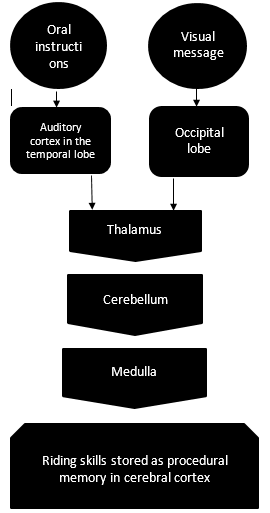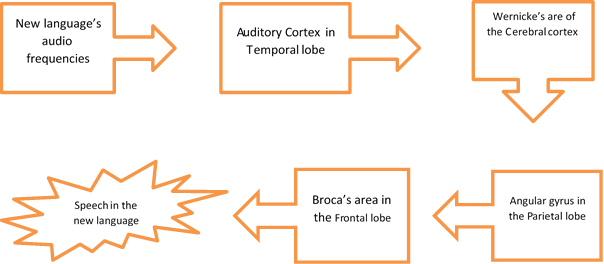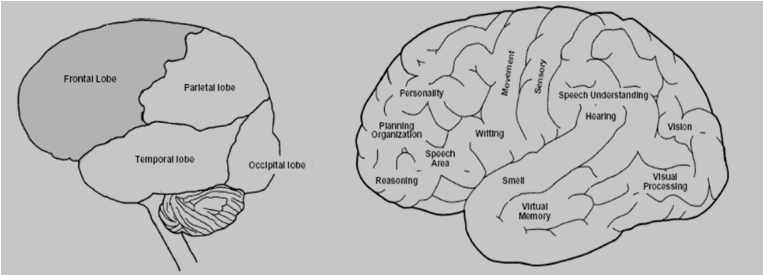Introduction
The human brain is one of the body’s most essential and complex organs. The brain controls almost all a person’s activities, including walking, reading, and riding. Research provides significant information concerning the functions of this important body part. For example, biologists investigating the brain show that it has specific parts that perform specialized roles. Other studies allude that damages to the brain cells cause substantial changes to people’s behavior and ability. The education sector is one of those highly affected by scientific investigations about the human brain. Understanding parts and operations of the brain across different ages informs instructional changes and methodologies. The aspect comes from the desire to ensure learning among all children regardless of race, disability, or other dissimilarities. The brain has specific structures that influence cognition, memory, and learning as a multifaceted tissue and controls several body operations.
Brain Function and Learning
The human brain plays a central role in processing, storing, and utilizing information, which constitutes learning. However, learning occurs at different levels of living, with the human brain comprehending only a specific kind of information appropriate to its level of development (Dehaene, 2020). According to Dehaene (2020), humans have meaningfully developed brain cells even at birth. That is why a young child has a memory of suckling and crying. The child feels pain, hunger, and heat, which are processed by the brain’s different sections. Accordingly, the memory cells continue to grow with age until one is ready for preschool learning, mainly involving auditory and visual abilities (Sparks, 2021). Therefore, the brain’s auditory cortex and the general cerebral cortex help in preschool education. Here, the child learns by grasping rhyming words and repeating them. The message gets to the brain cells through the ears and all the parts responsible for processing auditory and visual information at this level.
Children learn coordinating motor skills during the preschool grade, which occurs through participating in practical activities in groups through the teacher’s guidance. The toddler then joins the elementary learning level with brain fibers developing through the brain’s white matter (myelin) (Jayasankara et al., 2021). Learning during the elementary level mainly involves the posterior regions, where the structures for auditory, visual, and tactile operations intersect (Satralkar et al., 2021). Therefore, the child learns academically and socially by interacting with educational material and forming more meaningful relationships with friends. Moreover, learners develop arithmetic, writing, and reading skills due to their developing brain cells’ connectivity (Satralkar et al., 2021). The middle school and other higher levels of learning follow, with the learners interrelating new and more complex content and environmental issues based on brain cells’ ability.
Bike Riding and New Language Learning
Perhaps, riding is one of the most enjoyable pass-time activities among young people. Adults also embrace the practice as part of healthy living due to physical exercise. However, riding is not easy, especially during the initial days. A person interested in learning to ride gets ideas from friends or a trainer. The information comes in two ways: verbal instructions and responses to questions and observation while the coach handles the bike. Such makes eyes and ears crucial elements in learning how to ride. The brain acquires information from the two sensory organs, then processes and internalizes it for application. Consequently, learning riding first involves the auditory cortex in the brain’s temporal lobe, which processes auditory material. The temporal lobe performs rudimentary and advanced functions in hearing, including perceiving language switching during the instructions’ provision.

The occipital lobe processes the messages acquired through the eyes. The structure exists at the back of the brain and interprets visual information and stimuli from the eyes’ retina as received by the visual cortex (Sparks, 2021). The practical riding activity also involves the thalamus, cerebellum, and medulla. The thalamus receives messages from the temporal and occipital lobes, processes them, and channels them to the cerebral cortex. The cerebral cortex is the main site of neural incorporation in the central nervous system. The structure controls attention, awareness, perception, thought, memory, and consciousness while one tries to pull various muscles together to ride. The awareness role of the cerebral cortex slowly becomes used to the frightening exercise, controlling fear as one meets traffic and rough terrain, while being attentive controls the eyes’ focus on the front things and the cars from behind when learning to ride.
The cerebellum helps in making postural adjustments while one ride to maintain balance. The brain part (cerebellum) coordinates the vestibular receptors and proprioceptors to moderate commands to motor neurons to recompense for swings in body posture or variations in load upon muscles. The medulla then coordinates the spinal cord for additional balance and to regulate the autonomic variation in heartbeat and respiration to supply more oxygen and nutrients to the rider’s muscles. The learning process continues with the various parts of the brain recording all their activities until the exercise’s procedure becomes a recorded program in the brain as procedural memory, as shown in Figure 1.
The Broca’s area, auditory cortex, Wernicke’s area, angular gyrus and the primary auditory cortex are the primary brain structures involved in learning a new language. The learner perceives the new language’s audio frequencies through the auditory cortex, located in the temporal lobe. The message then goes to Wernicke’s area of the cerebral cortex, where the apprentice understands aspects such as pronunciation. The Angular gyrus in the parietal lobe then processes the new dialect before Broca’s area in the frontal lobe produces the speech in the new language, as shown in Figure 2 below. The process mental process repeats until the students can speak fluently with ease.

Details of Brain Structures Involved in Learning and their Purpose
The brain is a polygonal structure with multifarious portions that execute related tasks. According to Sparks (2021), brain cells start forming in humans long before birth. Examples of the distinct brain parts include the cerebral cortex, brain stem, medulla, midbrain, cerebellum, pons, and limbic system (Sparks, 2021). The first part (the cerebral cortex) plays several roles that make individuals unique. The section controls consciousness, language mastery, memory, perception, imagination, reasoning, voluntary physical actions, sensations, information processing, and thinking (Carter et al., 2019). The cerebral cortex forms the brain’s outermost fragment consisting of bumps and grooves visible on looking beneath the skull. The segment consists of frontal, parietal, temporal, and occipital lobes (Sparks, 2021). Accordingly, each lobe is associated with unique functions such as auditory perception reading.
The frontal portion dominates the brain’s anterior section and controls tasks like cognition, motor skills, expressive language, and reasoning. The motor cortex lies at the back of the frontal lobe, near the central sulcus, and is responsible for body movements. Persons with damaged frontal lobe exhibit challenges such as increased aggression, attention issues, and socialization problems (Sparks, 2021). The parietal lobe exists in the central region of the brain and mainly processes perceptible sensory information like texture, pain, and pressure. The somatosensory section in charge of the body’s senses also dwells in the parietal lobe (Sparks, 2021). Furthermore, the temporal section exists in the brain’s bottom region and houses key elements, such as the auditory cortex, responsible for sound and language interpretation. The hippocampus is the other fundamental brain part in the temporal lobe, which forms and preserves long-term memories (Sparks, 2021). Consequently, persons exhibiting damaged temporal lobes have challenged memory, language, and speech perception skills.
The occipital lobe, found in the brain’s posterior side, is in charge of visual messages’ interpretation. The visual cortex, which receives messages from the eye’s retina, is a major part of this brain division. Visual complications such as the inability to recognize objects, difficulty identifying colors, and problems in understanding words emerge due to a damaged occipital lobe (Sparks, 2021). The brainstem exists as the brain’s base and controls much of the involuntary operations of the body. Examples of such activities include breathing and heartbeat, supporting life (Sparks, 2021). The midbrain, medulla, and pons are distinct sections of the brain located within the brain stem. The midbrain serves as a relay system that helps process visual and auditory information. Furthermore, the midbrain takes care of eye movements and the ears’ sensitivity.
The substantia nigra and red nucleus exist in the midbrain and play a significant role in controlling body movement. Carter et al. (2019) report that the substantia nigra supports the brain’s survival by controlling dopamine production. The medulla controls blood pressure, heart rate, and breathing, while the pons controls the sleep cycles and breathing, together with connecting the cerebral cortex, medulla, and cerebellum (Sparks, 2021). Occasionally called the “minute brain,” the cerebellum lies after the brain stem and mainly coordinates with various parts of the brain. Correspondingly, this brain division (cerebellum) modifies signals concerning movements to make them accurate and beneficial. Accordingly, all the activities requiring different muscle groups to act together, such as playing piano while singing and riding, depend on the cerebellum.
The amygdala, thalamus, hypothalamus, and hippocampus constitute the limbic system’s basic components. The hypothalamus exists along the brain’s base close to the pituitary gland and controls emotions, hunger, thirst, circadian rhythm, and body temperature (Carter et al., 2019). Being next to the pituitary gland allows the hypothalamus to control the gland’s secretion of vital hormones that regulate several body functions. The amygdala lies at the base of the brain and plays a role in emotions, memory, and the fight-or-flight reaction (Sparks, 2021). According to Carter et al. (2019), the amygdala primarily processes stimuli from outside and channels them to the hippocampus for the body to respond appropriately to the outside threat. The thalamus plays a transitory role by processing and transmitting sensory and movement information to and from the cerebral cortex. Lastly, the hippocampus exists in the temporal lobe and helps create learning and memory.

Conclusion
Admittedly, the human brain controls several operations of the body. For example, learning new skills involves perceiving the signals by the sensory structure before the same is handled by different brain sections to become familiar. Riding and learning a new language are two examples described in the above work. Each starts with new instructions that, at times, frighten the brain before it can acquaint them. Accordingly, understanding the brain’s anatomy is crucial for teachers and coaches. Knowledge about the organ’s various parts, development, and functions helps educators to design appropriate instructional content for effective learning, even for persons with delayed mental abilities.
References
Carter, R., Aldridge, S., Page, M., & Parker, S. (2019). The human brain book. DK Publishing.
Dehaene, S. (2020). How we learn: Why brains learn better than any machine… for now. Viking.
Jayasankara, R. K., Hunjan, U., & Jha, P. (2021). Brain-Based learning method: Opportunities and challenges. Neuro-Systemic Applications in Learning, 295-307. Web.
Satralkar, M., Cherian, J., & Thomas, K. A. (2021). Applications of Neuroscience in education practices: A research review in cognitive Neuroscience. Neuro-Systemic Applications in Learning, 117-135. Web.
Sparks, S. (2021). Neuroanatomy coloring book: Human brain coloring book for neuroscience and neuroanatomy workbook. Amazon Digital Services LLC – KDP Print US.
